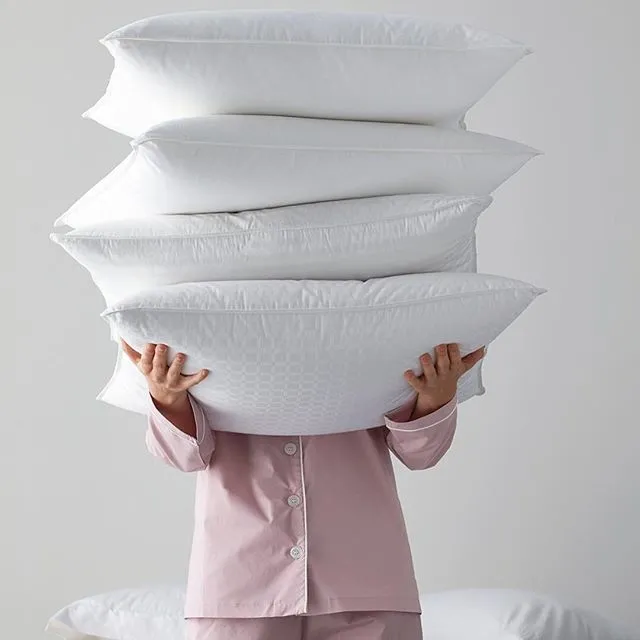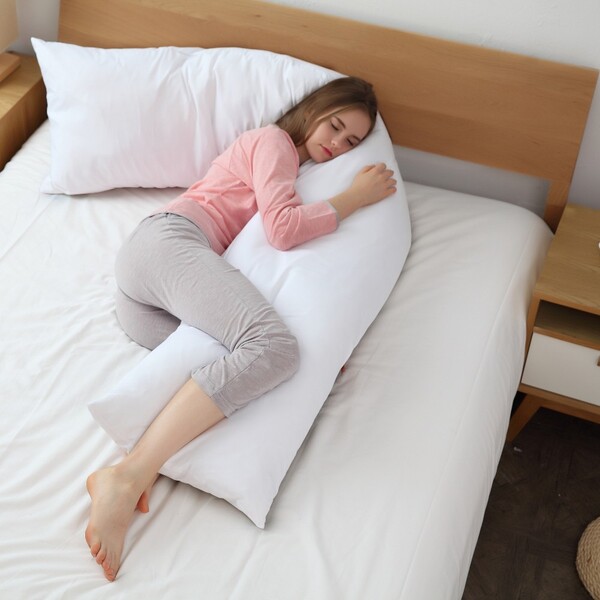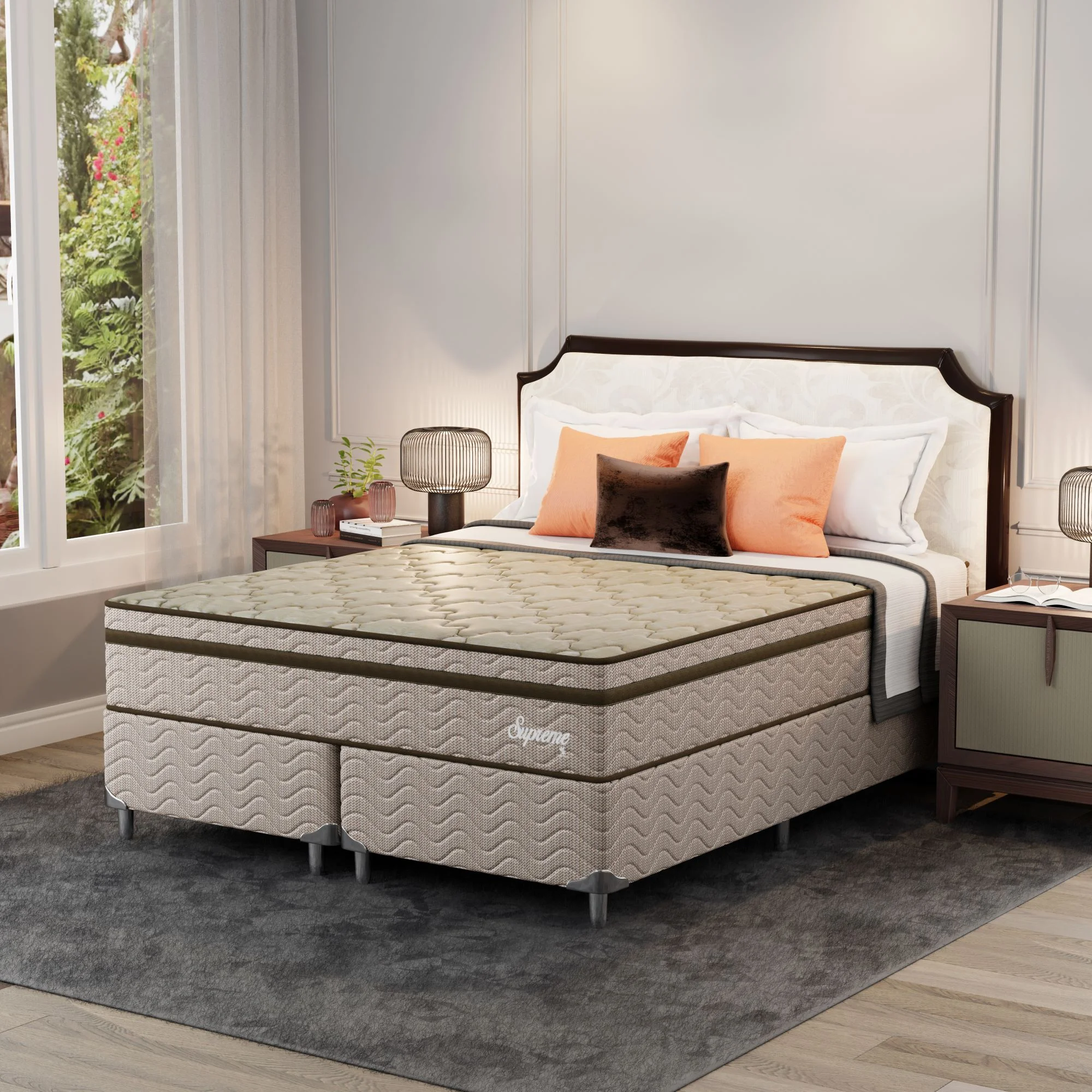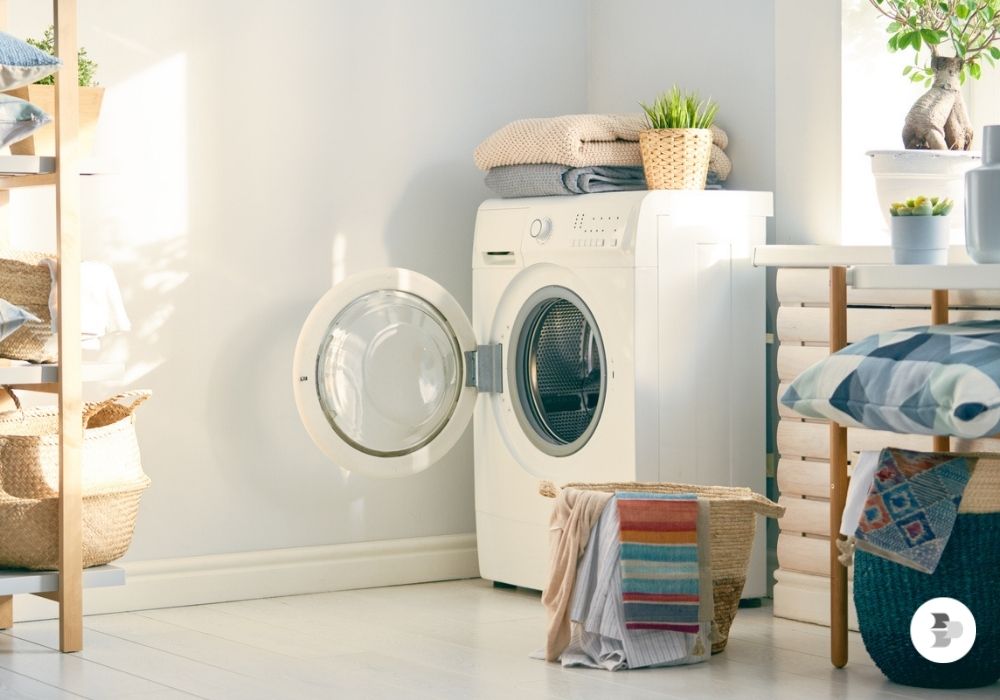Best Pillows to Buy in 2025
Discover the best pillows of 2025 with our comprehensive guide. Detailed analysis of the best models, types, materials and essential tips to choose the perfect pillow for your needs.
Choosing the right pillow can be the difference between waking up refreshed or with that terrible neck pain. With so many options available in 2025, from goose down pillows to ergonomic models with advanced technology, the decision can seem overwhelming.
A good pillow isn't just about comfort - it needs to perfectly align your cervical spine, regulate temperature during sleep, and resist daily use without losing its shape. Plus, it needs to suit your preferred sleeping position and, of course, fit your budget.
In this comprehensive guide, you'll discover the best pillows to buy in 2025, with detailed analysis of each type, essential selection criteria, and practical tips to make the right purchase. Get ready to transform your nights of sleep!
Table of Contents
- Why Choosing the Right Pillow Is Essential
- Main Types of Pillows Available
- Goose Down Pillows: Luxury and Comfort
- Synthetic Fiber Pillows: Practicality and Economy
- Memory Foam Pillows: Technology and Support
- How to Choose the Ideal Height and Firmness
- Pillows for Each Sleep Position
- Pillow Care and Maintenance
- Conclusion: What's the Best Pillow for You
Why Choosing the Right Pillow Is Essential
The quality of your sleep is directly related to the pillow you use every night. An inadequate pillow can cause neck pain, shoulder tension, snoring, and even insomnia. That's why investing in the right pillow is investing in your health and well-being.
The ideal pillow should maintain the natural alignment of your cervical spine, regardless of the position you sleep in. When your head is too high or too low, your spine goes out of proper alignment, causing muscle tension and pain.
Beyond adequate support, a good pillow needs to regulate temperature during sleep. Materials that retain too much heat can cause discomfort and interrupt your natural sleep cycle. That's why choosing the right material is as important as the shape and height.
Durability is also a crucial factor. A quality pillow can last 3 to 10 years, depending on the material and care. Investing in a good quality model is cheaper in the long run than constantly replacing cheap pillows.
Main Types of Pillows Available
The pillow market in 2025 offers an impressive variety of options, each with specific characteristics for different needs. Understanding the main types will help you make the most informed choice.
Down and feather pillows continue to be symbols of luxury and comfort. They're soft, moldable, and offer excellent thermal regulation. However, they may not be ideal for those with allergies or who prefer firmer support.
Synthetic fiber pillows, especially silicone-filled ones, offer an economical and practical alternative. They're hypoallergenic, machine washable, and maintain their shape longer than many natural options.
Memory foam pillows revolutionized the market with their ability to perfectly mold to the contours of your head and neck. They're ideal for those seeking personalized support and pressure point relief.
| Type | Comfort | Durability | Price |
|---|---|---|---|
| Goose Down | Excellent | 8-10 years | High |
| Synthetic Fiber | Good | 3-5 years | Low |
| Memory Foam | Very Good | 5-8 years | Medium-High |
| Natural Latex | Excellent | 10-15 years | High |
Goose Down Pillows: Luxury and Comfort
Goose down pillows are considered the gold standard when it comes to comfort and luxury. These pillows offer a unique sensation of softness and coziness, as if you were sleeping on a cloud.
Goose feathers have exceptional natural properties. They are thermoregulating, maintaining ideal temperature during sleep - warming in winter and cooling in summer. Additionally, they're extremely durable, able to maintain their characteristics for up to 10 years with proper care.
Different compositions are available: 100% feather pillows, 100% down pillows, or blends of both. Feathers offer more support and firmness, while down provides greater softness. The combination of both results in a perfect balance between comfort and support.
An important characteristic is that these pillows naturally mold to the contours of your head and neck, providing personalized support. They also quickly "recover" their original shape when you change positions during the night.
For those with allergies, it's important to know that goose down pillows undergo special sanitization treatments that eliminate mites, fungi, and bacteria, making them hypoallergenic.
Synthetic Fiber Pillows: Practicality and Economy
Synthetic fiber pillows represent an excellent option for those seeking comfort, practicality, and affordable pricing. Made with polyester fibers treated with silicone, they reproduce the soft sensation of natural down.
The main advantage of these pillows is their ease of maintenance. You can wash them safely in the washing machine without worrying about special procedures. They dry quickly and maintain their properties even after multiple washes.
They're naturally hypoallergenic and resistant to mites, fungi, and bacteria. This makes them a safe choice for people with respiratory allergies or sensitivities. Additionally, they don't retain odors and are free of harmful substances.
Silicone fiber offers good flexibility and shape recovery capability. When you press the pillow, it quickly returns to its original format, ensuring consistent support throughout the night.
While they don't have the durability of goose down or latex pillows, synthetic fiber pillows offer excellent value for money. With more accessible prices, they allow you to replace the pillow more frequently, always keeping hygiene and comfort up to date.
Memory Foam Pillows: Technology and Support
Memory foam pillows, also known as viscoelastic foam, represent the most advanced sleep technology available. Originally developed by NASA, this foam reacts to body heat and perfectly molds to your contours.
The great advantage of memory foam is its ability to evenly distribute the weight of the head and neck, eliminating pressure points. This results in better blood circulation and significant reduction of cervical pain.
These pillows are especially recommended for people who suffer from neck pain, shoulder tension, or cervical spine problems. The personalized support helps maintain proper spine alignment throughout the night.
Many modern models come with additional technologies, like cooling gel that helps regulate temperature, or perforations that improve ventilation. These innovations solve the historical problem of memory foam retaining heat.
The durability of memory foam pillows is excellent, lasting 5 to 8 years while maintaining their properties. Although the initial investment is higher, the cost per year of use becomes quite attractive.

How to Choose the Ideal Height and Firmness
Pillow height and firmness are fundamental aspects that many people ignore, but they make all the difference in sleep quality. A pillow that's too high or too low can misalign your cervical spine, causing pain and discomfort.
The ideal pillow height depends mainly on your preferred sleep position and body type. People who sleep on their side generally need higher pillows (between 12 and 15 cm) to fill the space between the shoulder and head.
Those who sleep on their back need medium height (between 8 and 12 cm) to maintain the natural curvature of the neck. For stomach sleepers, low pillows (between 5 and 8 cm) are more suitable to avoid neck hyperextension.
Firmness also varies according to your needs. People with frequent cervical pain generally benefit from firm or extra firm support pillows. Those seeking more comfort can opt for medium or soft support models.
It's important to remember that some pillows allow height adjustments, like those with removable filling. This flexibility can be useful for finding the perfect configuration for your body.
If you have doubts about which height to choose, a simple tip is to observe how you feel when waking up. Neck pain may indicate the pillow is too high or too low, while morning headaches may suggest spine alignment problems.
Pillows for Each Sleep Position
Your preferred sleep position is the most important factor in choosing the ideal pillow. Each position requires specific characteristics of height, firmness, and shape to ensure proper cervical spine alignment.
For side sleepers (the most common position), the pillow needs to be higher and firmer to fill the space between the shoulder and head. Memory foam or goose down pillows with height between 12-15 cm are ideal. The goal is to keep the head aligned with the spine.
For back sleepers, medium height pillows (8-12 cm) with medium firmness are more suitable. They should support the natural curvature of the neck without pushing the head too far forward. Contoured or cervical models are excellent options.
For stomach sleepers (the least recommended position), very low (5-8 cm) and soft pillows are necessary to avoid neck hyperextension. Some specialists recommend even sleeping without a pillow in this position.
It's important to note that many people change positions during the night. In this case, a pillow that adapts well to different positions, like memory foam or down ones, might be the best choice.
If you share the bed with someone who has different preferences, consider investing in individual pillows suitable for each person, instead of trying to find a middle ground that might not please anyone.
Pillow Care and Maintenance
Keeping your pillow clean and well-maintained not only extends its lifespan but also ensures a healthier sleep environment. Different materials require specific care, so it's important to know the best practices for each type.
For synthetic fiber pillows, maintenance is quite simple. You can wash them in the machine with warm water and mild detergent. Use the delicate cycle and do an extra rinse to remove all soap residue. Dry completely in the dryer or in the sun, shaking occasionally to distribute the filling.
Goose down pillows require more care. Wash them every 6 months in large capacity machines or take them to a specialized laundry. Use mild soap and avoid fabric softeners. Drying should be done on low temperature with tennis balls to keep the feathers loose.
Memory foam pillows generally cannot be machine washed. Only clean the removable cover and treat stains on the foam with a damp cloth and mild soap. Let it dry completely in the open air, avoiding direct sun exposure.
Regardless of the type, always use washable protective covers under the pillowcase. They create a barrier against sweat, body oils, and mites. Change and wash these covers weekly along with your bedding.
Daily pillow airing is also important. Let it "breathe" without a pillowcase for a few hours, preferably in a ventilated place. This helps eliminate moisture accumulated during the night and prevents the development of fungi and bacteria.
| Pillow Type | Washing Frequency | Method | Drying |
|---|---|---|---|
| Synthetic Fiber | Every 2-3 months | Machine, delicate cycle | Low temperature dryer |
| Goose Down | Every 6 months | Large machine or laundry | Dryer with tennis balls |
| Memory Foam | Do not wash | Spot cleaning only | Air dry |
| Latex | Do not wash | Clean with damp cloth | Natural ventilation |

Conclusion: What's the Best Pillow for You
Choosing the ideal pillow isn't a simple task, but with the right information, you can make an informed decision that will transform your nights of sleep. Remember that there isn't one "best" pillow for everyone - there's the pillow that's best for you.
If you seek luxury and maximum comfort, goose down pillows are an excellent choice. They offer natural thermal regulation, exceptional durability, and that incomparable sensation of softness. They're ideal for those who can invest more and value natural materials.
For those prioritizing practicality and value for money, synthetic fiber pillows are perfect. Easy to wash, hypoallergenic, and affordably priced, they serve most people well and can be replaced more frequently.
If you have specific problems like cervical pain or need personalized support, memory foam pillows are unbeatable. They perfectly mold to your body and offer pressure point relief.
Always remember to consider your preferred sleep position, possible allergies, ease of maintenance, and available budget. A good pillow is an investment in your health and quality of life.
To complement your rest environment, also consider investing in a good box spring bed and improving your bedroom lighting. This way, you'll create the perfect environment for truly restorative nights.
Invest in your sleep - your body and mind will thank you every morning!







